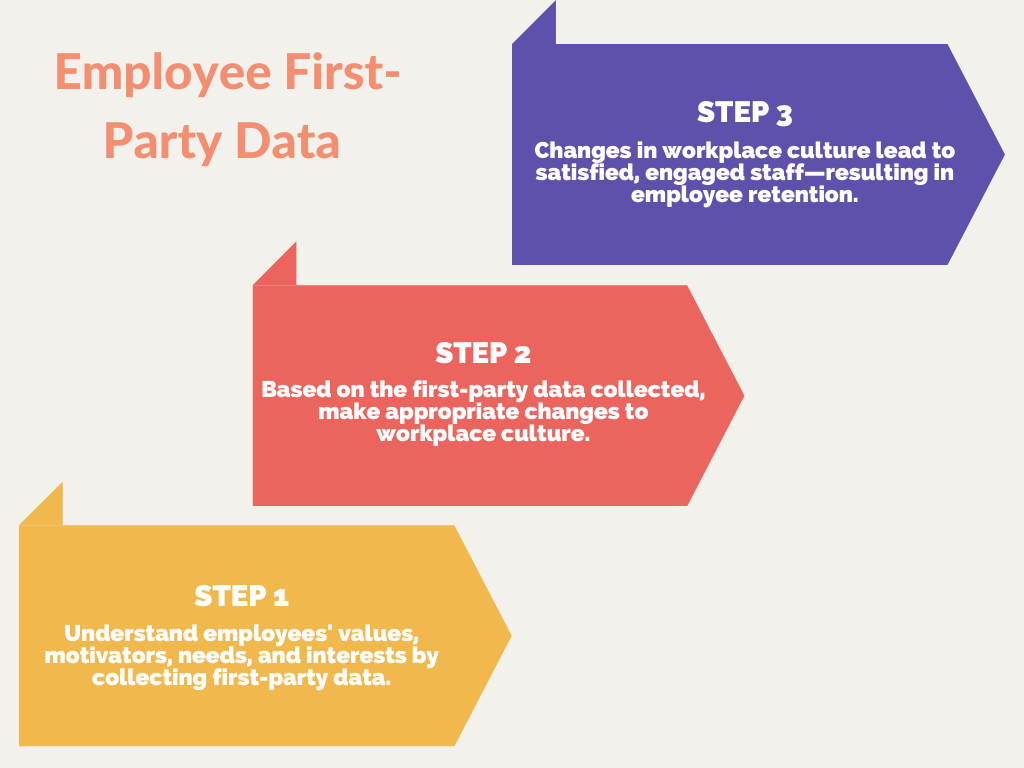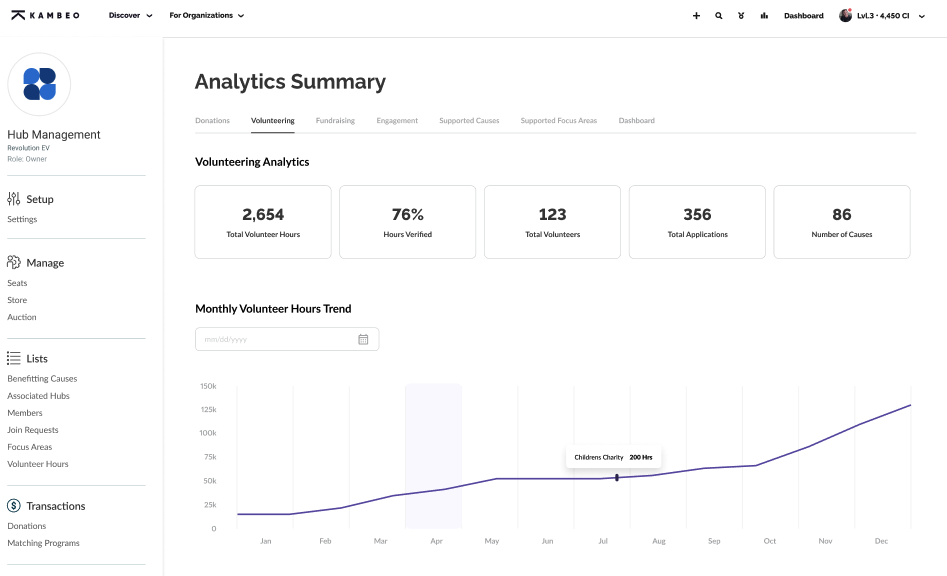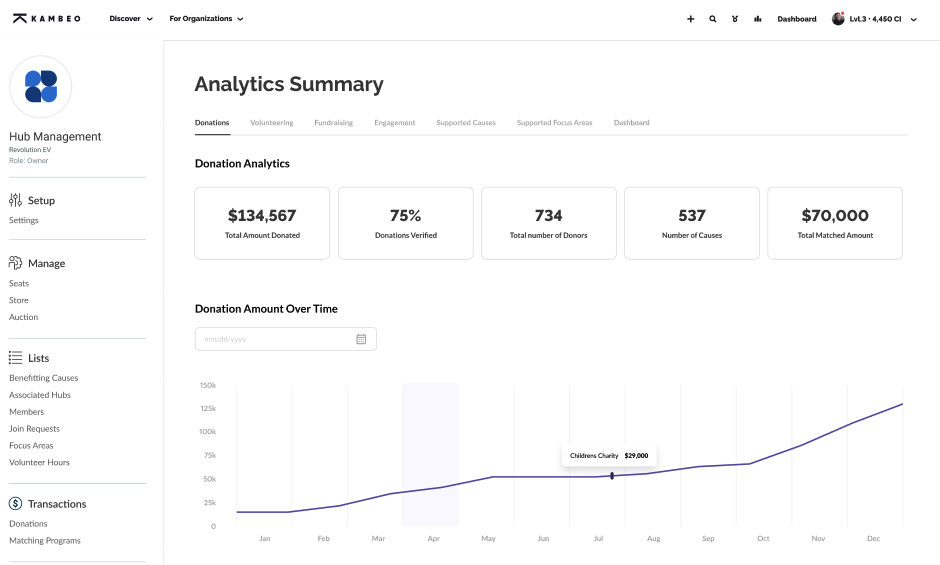- 75% of Company ABC’s employees strongly believe in their company’s core values, which align with their own values.
- 62% of employees believe all organizations should operate with core values at the forefront.
Which data point is more credible? The answer would most likely be example 1. This is because the data in example 1 is first-party data that originates directly from the source (Company ABC’s employees), therefore making it more reliable and accurate. On the other hand, example B is considered third-party data and is sourced from external publishers, websites, or data owners.
While third-party data is useful for providing factual evidence to strengthen certain writing pieces or social media posts, first-party data provides more value when trying to uncover insights about your employees (or customers).
Why is data important?
With annual employee turnover at 30% and the average cost to replace an employee sitting at 30% (% of salary), retaining employees is now more critical than ever.
However, how can you devise new strategies to reduce turnover without understanding why your employees may be leaving? That’s where first-party data plays a role, collecting data and deriving insights directly from your employees to aid in formulating strategies that reduce turnover.
This blog explores how your organization can collect first-party data on your employees to analyze their values, motivators, needs, and interests, thereby modifying workplace culture and increasing employee retention.

What is first-party data?
First-party data is information collected and owned by a company. In the case of employees, first-party data is collected through surveys, interviews, and online tracking (tracking how employees use and engage with specific software).
Let’s explore some methodologies for collecting first-party data from your employees:
1) Surveys
Surveys open the lines of communication between employees, giving them a chance to provide their thoughts and opinions while feeling valued. Surveys don’t just benefit employees; an organization can utilize a survey to gain insight into employees’ values, interests, and motivators.
When conducting a survey to better understand your employees, ask questions such as:
- Do you believe your role helps contribute to our mission?
- Do your core values align with our workplace values?
- Which company value(s) do you resonate with? And why?
- Do you believe a workplace giving program would provide you with more meaningful work?
- Outside of work, what are some of your hobbies and passions? Do you believe any of these interests can also be pursued in a professional setting?
- What motivates you to learn and grow in your career?
After surveying your employees, let’s assume that only 32% of employees feel that their core values match their workplace values, and 83% of employees believe a workplace giving program would provide them with more meaningful work.
What does this first-party data tell you?
- Starting a workplace giving program would be valuable, allowing employees to get involved with meaningful work and interact with community supporters and nonprofits who are passionate about making a difference.
- The data also suggests that your company’s values need to be revamped to better meet the values your employees possess. Creating a values-based culture improves decision-making, communication, and motivation among your employees.
2) Interviews
Group interviews are a more personalized method to make your employees feel heard and determine how to best modify your workplace culture to meet their needs.
Interviews should be conducted in addition to surveys (preferably after a survey). For example, let’s assume from your survey that you found 83% of employees believe a workplace giving program would provide them with more meaningful work outside their role. The next step is to determine how a workplace giving program should be implemented; however, you need to collect first-party data from your employees to fine-tune the implementation. This is where interviews come into effect.
When conducting an interview regarding a workplace giving program, ask questions to your employees such as:
- How often would you volunteer per year if a workplace giving program were implemented?
- Do you currently support any nonprofits or charities?
- If so, what opportunities do you partake in on behalf of these causes?
- Would you participate in company-wide volunteer days or fundraisers?
- How important is it that your workplace recognizes and celebrates your achievements?
What does this first-party data tell you?
The answers derived from these group interviews will help dictate how your workplace giving program will take shape and be maintained. This first-party data collected from your employees will help you decide:
- How many volunteer days you will give?
- What company-wide initiative you will start (i.e., a volunteer day or fundraiser)?
- What types of causes you will include in your workplace giving program?
- How often you will share your employees’ corporate giving achievements?
3) Online tracking
Let’s suppose you conducted a company-wide survey and found that 83% of your employees would be interested in a workplace giving program. Then, you interview 30 employees to collect data on how frequently they want to participate and what social good initiatives they would like to get involved in.
After collecting this first-party data, you find that the best solution to maximize employee engagement, find unique giving opportunities, and share your social impact is by introducing a software, more specifically, a social impact platform.
You might think that once you introduce a social impact platform and employees become involved in the community, data doesn’t need to be collected. However, after having spent money investing in social impact software and educating your employees on its functionality—why stop there?
It would be hard to establish whether this platform helps your employees feel more satisfied, engaged, and productive in the workplace (factors that all lead to employee retention) if you aren’t tracking employee activity.
Below are a couple of ways you can collect first-party data on your employees from a social impact platform to assess its effectiveness and further modify workplace culture:
A) Volunteer tracking:
For example, if your organization has 200 employees with 123 employees volunteering and a total of 2,654 volunteer hours, then you can effectively conclude:
- A 61% employee participation rate.
- An average of 21.5 volunteer hours per employee.

What does this first-party data tell you?
61% of your employees want to lend their support to a cause by giving their time and feel inspired to volunteer because their workplace encourages them. The 21.5 average volunteer hours per employee indicates that employees continue to enjoy meeting new people, learning valuable skills, and feeling a sense of purpose: all factors that come with volunteering.
How can workplace culture be further modified?
Continue to encourage volunteerism and recognize employee achievements in the world of social good (i.e., share employees’ volunteer successes through a social impact platform’s activity feed).
When employees are able to accomplish meaningful tasks through volunteering and receive recognition, their loyalty to your organization will increase. In fact, research shows that there is a 50% reduction in employee turnover when employees are engaged in workplace giving programs.
B) Donation tracking:
For example, if your organization has 1,000 employees with 734 donors, and raised a total of $134,567, then you can effectively conclude:
- A 73% employee participation rate.
- An average donation size of $183.33 per employee.

What does this first-party data tell you?
73% of your employees take pride in making a difference through financial contributions; helping to fund a program or project that benefits a charitable organization. An average donation size of $183.33 indicates that employees are able to seamlessly discover charities & nonprofits and personally connect with its mission through a social impact platform (opportunities that would otherwise be difficult to find on their own).
How can workplace culture be further modified?
Continue to connect with causes through a social impact platform that provides employees with numerous giving opportunities. As the causes your organization supports should also align with your employees’ interests, invite employees to suggest causes they would like to see included in your workplace giving program.
71% of employees stated that it’s very important to work at a company that supports giving to nonprofits and charities. Therefore, increasing the number of giving opportunities your employees can partake in plays a significant role in boosting employee satisfaction.
Collect First-Party Data With Kambeo
Data tells a story. It uncovers employees’ values, motivators, needs, and interests. Beyond using this first-party data to generate new learnings, this data can be put into action to modify workplace culture. Actions that include:
- Revamping organizational values.
- Starting a workplace giving program.
- Implementing social impact software.
Rather than looking externally for third-party data to assist in making crucial decisions, consider the data right at your fingertips—the first-party data from your employees.
Start collecting valuable first-party data on your employees through Kambeo’s social impact platform. If you are thinking of starting (or have already implemented) a CSR program, Kambeo provides your organization with relevant, reliable and timely first-party data regarding employee engagement.
Book a demo to learn more about the valuable insights you can glean.



